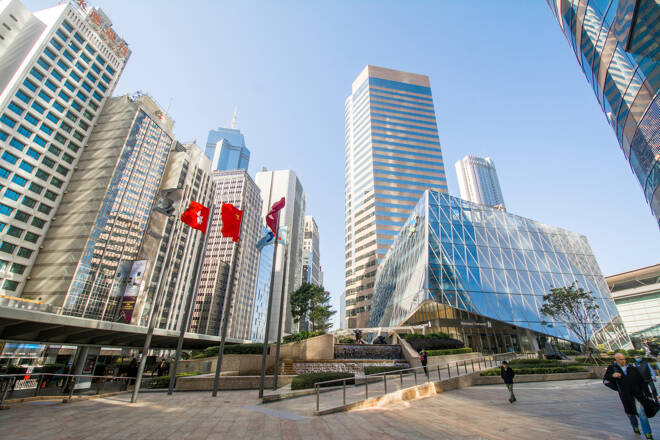Advertisement
Advertisement
Hang Seng Index Sees Morning Gains on China PMIs, Yet Trump Tariff Fears Persist
By:
Key Points:
- China’s manufacturing PMI returns to expansion at 50.1, boosting Asian market sentiment amid policy hopes.
- BoJ holds rates at 0.25%; Governor Ueda signals data-driven decisions, impacting USD/JPY and Nikkei stocks.
- ASX 200 slides 0.25% as mining stocks drop, with BHP and Rio Tinto hit by falling iron ore prices.
US Markets: Nasdaq Ends Four-Day Winning Streak
On Wednesday, October 30, US equity markets closed lower. The Nasdaq Composite Index ended its four-day winning streak, falling 0.56%, while the Dow and the S&P 500 declined by 0.22% and 0.33%, respectively.
US labor market data dampened expectations of a December Fed rate cut, impacting demand for riskier assets.
Notably, Super Micro Computer (SMCI) plunged 32.68%, the worst performer on the Nasdaq.
US Economic Indicators Temper Expectations for a December Fed Rate Cut
On Wednesday, the ADP reported a 233,000 surge in private sector jobs in October, up from 159k in September. The October report signaled a resilient US labor market. A tighter labor market may boost wages, fueling consumer spending and demand-driven inflation. Expectations of a higher inflation rate tempered investor bets on a December Fed rate cut.
According to the CME FedWatch Tool, the probability of a 25-basis point December Fed rate cut dropped from 74.1% on October 30 to 69.7% on October 31.
China Manufacturing Sector Returns to Expansion
On Thursday, the Chinese economy was in focus, with NBS private sector PMIs influencing market risk sentiment. The NBS manufacturing PMI increased from 49.8 in September to 50.1 in October, returning to expansion. However, service sector activity remained lackluster, with the NBS Non-Manufacturing PMI rising from 50.0 to 50.2 in October.
The tepid numbers could fuel speculation about more policy stimulus to bolster the economy.
Bank of Japan Maintains 0.25% Interest Rate
The Bank of Japan was also under the spotlight on Thursday. In line with expectations, the BoJ kept the interest rate at 0.25%.
Notably, Bank of Japan Governor Kazuo Ueda gave no insights into the timing of the next rate hike, stating that the Bank had no preset view. The BoJ Governor added that policy decisions will hinge on upcoming economic data and the Bank’s view on the economy and outlook.
Regarding Sunday’s general election result, Governor Ueda stated,
“Recent political developments alone won’t directly affect our price forecasts. But if there are big changes in policy, we will revise our forecasts as needed taking into account the impact of such moves.”
Despite the BoJ’s outlook, the USD/JPY trended lower on Thursday, falling 0.58%, pressuring Nikkei Index-listed export stocks.
Hang Seng and Mainland China Equities Advance on PMI Numbers
In Asian markets, the Hang Seng Index advanced 0.17% through Thursday morning. PMI numbers from China drove demand for HK-listed stocks.
The Hang Seng Tech Index advanced by 0.13%, with tech giant Baidu (9888) gaining 0.34%. Real-estate stocks fared better, with the Hang Seng Mainland Properties Index rallying 1.82%.
Mainland China’s equity markets also rose on Thursday, with the CSI 300 and the Shanghai Composite up 0.04% and 0.42%, respectively.
However, the gains were modest as investors considered the possibility of a Trump return to the White House. Markets expect Trump to impose punitive tariffs on Chinese goods, potentially impacting its economy.
Nikkei Falls on Yen Strength
In Japan, the Nikkei Index declined by 0.50% on Thursday, pressured by a stronger Japanese Yen. Tech stocks trended lower, tracking the Nasdaq mini as investors reacted to Microsoft’s (MSFT) after-hours decline (-3.93%).
On Thursday, Japan’s economic indicators sent mixed signals. Retail sales increased by 0.5% year-on-year in September, down sharply from 3.1% in August. Weak retail sales could dampen inflationary pressures, potentially reducing bets on a December BoJ rate hike. Yet, industrial production signaled an improving demand environment.
Key movers included SoftBank Group Corp. (9984), which declined by 0.47%, while Tokyo Electron slid by 2.54.
ASX 200 Slips Amid Mining Stock Losses
The ASX 200 Index slipped by 0.25% on Thursday. Gold and mining stocks contributed to the losses.
Mining giants BHP Group Ltd (BHP) and Rio Tinto Ltd (RIO) saw declines of 1.09% and 0.83%, respectively. Iron ore spot prices extended losses from Wednesday, affecting demand for mining stocks. Northern Star Resources (NST) slid by 1.55% as the gold spot price retreated on Thursday.
Looking Ahead
Looking ahead, several key events could shape market sentiment, requiring investors to stay informed. The RBA interest rate decision, the US Presidential Election, and the upcoming National People’s Congress Standing Committee (NPCSC) meeting will impact market risk sentiment.
Markets expect Beijing to announce policy stimulus targeting consumption to boost growth. However, hawkish central bank stances and a Trump victory could overshadow Beijing’s policy news. Stay informed with our latest news and analysis to manage your risks effectively.
About the Author
Bob Masonauthor
With over 28 years of experience in the financial industry, Bob has worked with various global rating agencies and multinational banks. Currently he is covering currencies, commodities, alternative asset classes and global equities, focusing mostly on European and Asian markets.
Did you find this article useful?
Latest news and analysis
Advertisement
